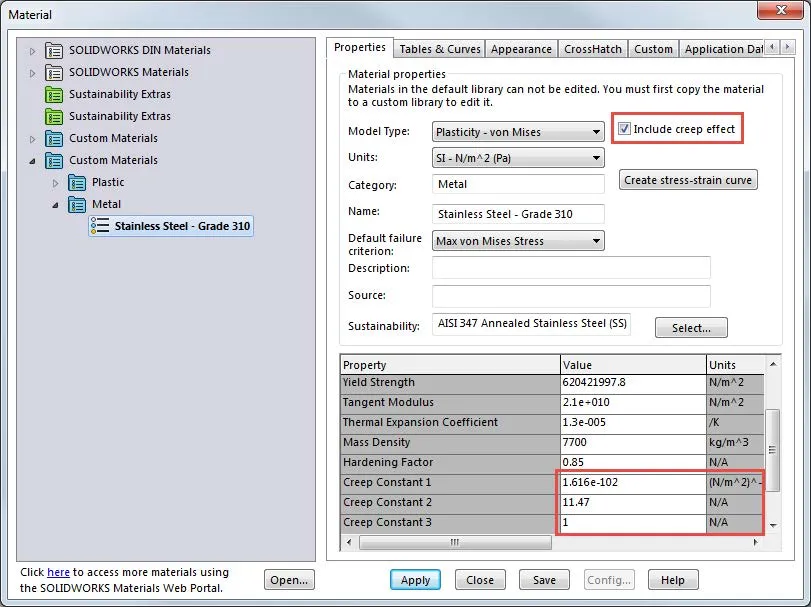SOLIDWORKS Simulation Creep Analysis Tutorial
A creep analysis can only be performed in the SOLIDWORKS Simulation Non-Linear study type which is a SOLIDWORKS Simulation Premium product tool.
Creep can occur in materials that have been exposed to one or more mechanical stresses in conjunction with higher than room temperature thermal loads over a long period of time. The result of material creep is an invariable deformation of the material and eventually failure of the object. As seen in the graph below, the creep rate increases with increased temperature and stress.

How to Perform a Creep Analysis
A realistic creep result, as everything in SOLIDWORKS Simulation, depends completely on the user's input parameters. One parameter that only a creep analysis requires is material creep constants from creep curve data. If these parameters are not correct for the material being studied, then the results will not be accurate no matter what else happens.
To perform a creep analysis, start a Non-linear study and apply a material with the Include creep effect box checked as well as the three creep constant fields provided for the material filled in with accurate creep constant data for that material.

Make sure that all the proper loads, fixtures, and connections have been applied to the model. Apply a load, and make sure to set up a time curve under Variation with Time in the Forces/Torques command box.


As in every Non-Linear study, it is very important to set up the study properties to the correct specifications for that study. The end time should be the same number as the max time used in the creep time curve. Make sure to use the direct sparse solver or large problem direct sparse solver, depending on the size of your study. Also, under the Advanced options button, make sure to set Maximum incremental strain and Singularity elimination factor to the specifications needed for your particular study.


Now, just run the Non-linear study and set the Strain plot Advanced Option to Creep. Then press the green checkmark to show the material creep in the model.

More SOLIDWORKS Simulation Analyses
Naval Shock Analysis (DDAM) Using SOLIDWORKS Simulation
SOLIDWORKS Simulation Frequency Analysis Comparison Between FEA and Real Life
Performing a Thermal Stress Analysis in SOLIDWORKS Simulation
SOLIDWORKS Simulation Composite Analysis
7 Steps to Perform a Fatigue Analysis in SOLIDWORKS Simulation

About Taran Packer
Taran is a SOLIDWORKS Simulation Technical Support Specialist at GoEngineer. He has a Bachelor’s degree in Biomedical Engineering from the University of Utah. Taran enjoys learning about different tools in SOLIDWORKS Simulation, Flow Simulation, and Plastics.
Get our wide array of technical resources delivered right to your inbox.
Unsubscribe at any time.